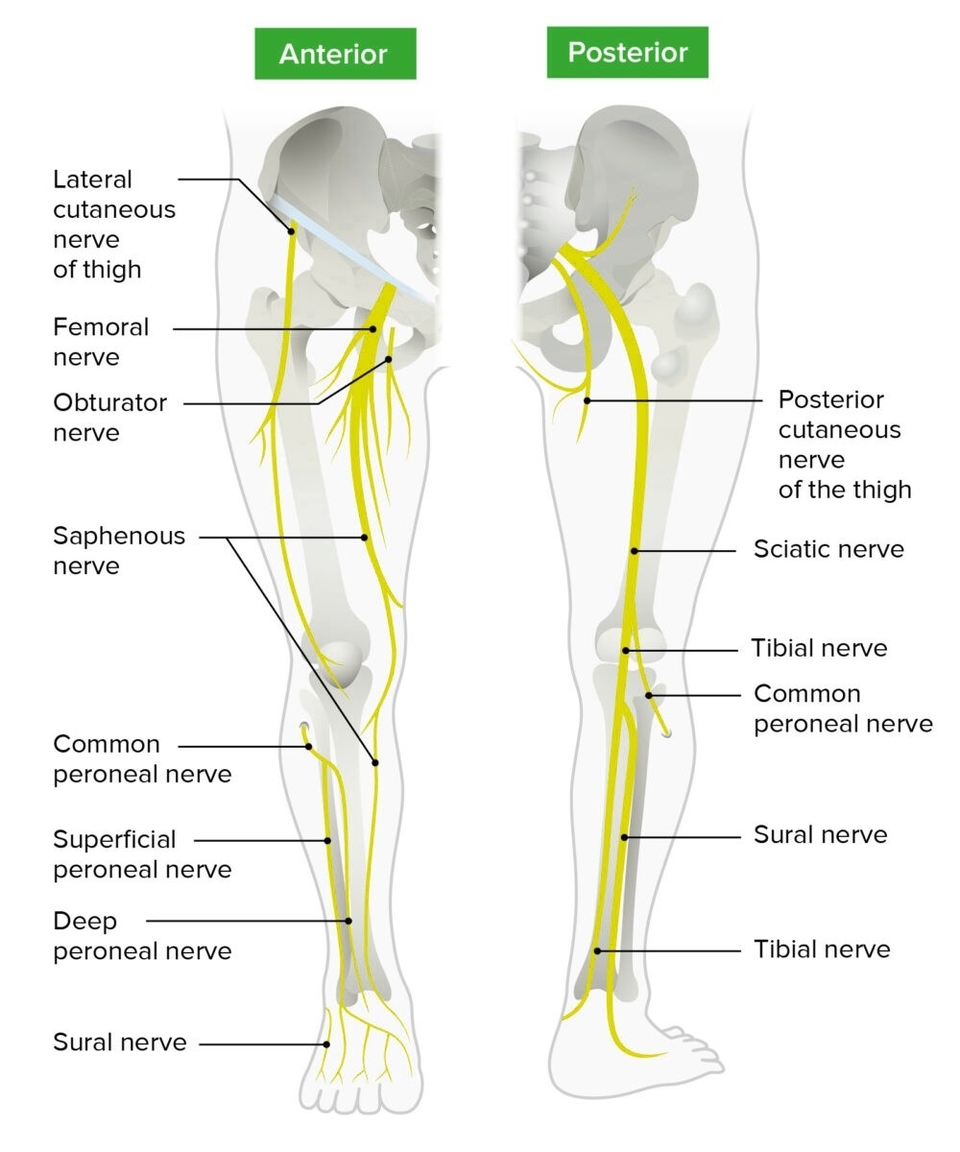The lower limb nerves are a complex network that originates from the lumbosacral plexus, which is formed by the anterior rami of spinal nerves L1-L4 and a contribution from the anterior ramus of spinal nerve T12. These nerves play a crucial role in transmitting signals between the brain and the lower limbs, enabling movement and sensation.
1. Lumbar Plexus
The lumbar plexus is located on the posterior abdominal wall, anterior to the transverse processes of the lumbar vertebrae, and within the posterior portion of the psoas major muscle. It gives rise to several nerves that innervate the lower limbs, including:
– Femoral Nerve: This nerve innervates the anterior thigh muscles and provides sensation to the anterior thigh and medial leg.
– Obturator Nerve: It innervates the medial thigh muscles and provides sensation to the medial thigh.
2. Sacral Plexus
The sacral plexus gives rise to the sciatic nerve, which is the largest nerve in the body. It splits into two main branches:
– Tibial Nerve: It innervates the posterior thigh muscles and provides sensation to the skin of the posterior leg and sole of the foot.
– Common Fibular (Peroneal) Nerve: It innervates the short head of the biceps femoris, anterior and lateral leg muscles, and provides sensation to the skin of the anterior and lateral leg and dorsum of the foot.
3. Gluteal Nerves
The superior and inferior gluteal nerves originate from the sacral plexus. They innervate the gluteal muscles, which are responsible for movements of the hip joint.
4. Cutaneous Nerves
everal cutaneous nerves, including the femoral cutaneous and saphenous nerves, provide sensation to the skin of the lower limb.
5. Role in Movement and Sensation
The lower limb nerves play a crucial role in facilitating movement and providing sensation. They innervate the muscles of the hip, thigh, leg, and foot, enabling actions such as walking, running, jumping, and standing. They also transmit sensory information from the lower limbs to the brain, allowing for sensations such as touch, pain, and temperature.
6. Clinical Relevance
Damage or injury to the lower limb nerves can lead to conditions such as sciatica, foot drop, and numbness or tingling in the lower limbs. Therefore, understanding the anatomy and function of these nerves is crucial in diagnosing and treating such conditions.
In conclusion, the lower limb nerves form an intricate network that plays a vital role in motor function and sensory perception in the lower limbs. Their complexity and importance underscore the need for a thorough understanding of their anatomy and function.


